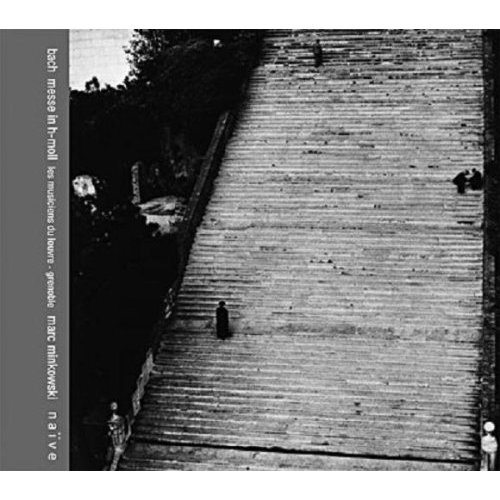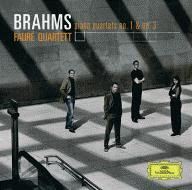Marc Minkowski’s first Bach recording, the monumental Mass in B minor
 “It’s the work of Bach’s I feel closest to … I learned this repertoire from the inside by playing the bassoon in Philippe Herreweghe’s ensemble la Chapelle Royale. Gradually, as I listened to this and that interpretation, I realized how much the Mass is a conductor’s work. In it, the most profound spirituality coexists with a vocal and instrumental profusion that reminds me of the texture of the concertos or the suites.” – Marc Minkowski, from the liner notes of his new recording
“It’s the work of Bach’s I feel closest to … I learned this repertoire from the inside by playing the bassoon in Philippe Herreweghe’s ensemble la Chapelle Royale. Gradually, as I listened to this and that interpretation, I realized how much the Mass is a conductor’s work. In it, the most profound spirituality coexists with a vocal and instrumental profusion that reminds me of the texture of the concertos or the suites.” – Marc Minkowski, from the liner notes of his new recording
For his second recording under a new exclusive contract with naïve, conductor Marc Minkowski leads Les Musiciens du Louvre–Grenoble and a team of young vocalists in a performance of Bach’s monumental Mass in B minor. It is Minkowski’s first Bach recording, and the Bach work that he most wanted to record. The special and potentially controversial twist with Minkowski’s recording is that he does not employ a separate chorus, but rather uses the grouped soloists to sing the choral numbers. Minkowski – along with many scholars – believes that this is likely the way that Bach himself would have performed the work, but his decision to record it this way was primarily to create a tightly-knit ensemble that would bring the work’s brilliant and rapidly shifting details most vividly to life. In taking this approach, Minkowski has compared the Mass to Bach’s famous Brandenburg Concertos, where individual players in the ensemble emerge to present solos and then regroup to form a cohesive tutti. As Minkowski explains in a lengthy and illuminating interview with Rémy Louis in the liner notes:
“[...] As soon as I started work on the B-minor Mass, the group of soloists seemed to me to be the obvious solution in musical terms. Bach turns everything into an orchestra. The way his mind works is polyphonic, contrapuntal, and, if I may be so bold, symphonic. There is something supremely symphonic in the Sonatas and Partitas for unaccompanied violin, not to mention his keyboard works. Well, the Mass seems to me to be a product of that same way of thinking. Its music is so dense, so complex, so breathtaking, that in my view it gains in grandeur from the use of soloists. All of a sudden, you no longer have the massed forces on one side and the individual on the other, but a single imposing vocal instrument, which sings the same faith in the same language from the ‘Kyrie Eleison’ to the ‘Dona nobis pacem’. Obviously, the choice of those soloists then becomes crucial. It’s no longer a question of taste. The whole edifice depends on it.”
George B. Stauffer, Dean of the Mason Gross School of the Arts and Professor of Music History at Rutgers University , explains further in the liner notes:
“The surviving materials from the Dresden performance of the ‘Kyrie’ and ‘Gloria’ in 1733 and the Hamburg performance of the ‘Credo’ in 1786 confirm that the B-minor Mass was conceived as a chamber piece rather than a massive choral-society work. The single vocal parts (one for each voice) point to a chorus of ten to 15 singers, from which the best voices would step forward to perform the arias, duets, and fugal expositions. The instrumental parts point to a modest ensemble of 20 to 25 players.”
When asked in the notes whether he describes his conception of the Mass as being more theatrical than liturgical, Minkowski responds:
“Certainly not theatrical in the sense of ‘like at the opera’. At no point did I feel that way about the music. The contrapuntal and instrumental drama of the mass is a true drama, but of a quite different nature from that of an opera by Telemann or Handel. The very special mood of contemplation and concentration that the work radiates, its unique atmosphere, place the performer in a state close to that of prayer. The element of theatricality that the performers must realize in their interpretation derives from the inflections and images of the text. But the music is played out in a different sort of theater.”
Bach began his Mass in B minor in the summer of 1748 and completed it in late 1749, just as his eyesight began to fail. It was too large for practical performance and was never performed in his lifetime, and after his death in 1750 it fell into almost complete obscurity. It received its first complete performance – in German, not Latin – in Leipzig in 1859. Bach’s family called it “The Great Catholic Mass”, and since Bach was Lutheran the reasons for his composing it are especially mysterious. Most, it not all, of the music in the Mass – arranged as a sequence of arias and choruses – is derived from cantata movements he had composed earlier, which were then revised and polished (almost all of his vocal works after 1730, in fact, stem from earlier music). As Professor Stauffer summarizes in his notes, “In modern times, as a humanistic concert mass, it continues to draw listeners into a musical world that is both contemplative and exhilarating, virtuosic and simple, retrospective and progressive, private and public.”
Like Minkowski’s debut recording for naïve, an all-Bizet album featuring music from Carmen and L’Arlésienne, the new recording is presented in deluxe naïve packaging, in this case featuring a 100-page booklet on laid paper. The Bizet recording was one of the most acclaimed releases of 2008, being named “CD of the Month” by both Gramophone and BBC Music magazine. It received the highest rating from Classics Today, 10/10 for Artistic/Sound Quality: “This certainly is the finest disc of Carmen and L’Arlésienne suites since Markevitch with the Lamoureux orchestra. [...] The deluxe booklet is magnificent. You’re going to love this.”
Last fall, Minkowski came to the U.S. for a guest-conducting engagement with the Cleveland Orchestra. This spring, Minkowski and his Musiciens du Louvre–Grenoble will perform and record Haydn’s “ London ” Symphonies in Vienna ’s Konzerthaus (June 2-6) and in August they will be in residency at the world-renowned Salzburg Festival.
Video material featuring commentary from Minkowski and the soloists and performance extracts (the recording was made in conjunction with live performances) is available at the following link: www.youtube.com/watch?v=uXBrWx5iRTw
Bach: Mass in B minor
Vocal ensemble of ten solo voices
Les Musiciens du Louvre–Grenoble / Marc Minkowski
V 5145
Two-CD set + 100-page book available March 31 from naïve

Comments